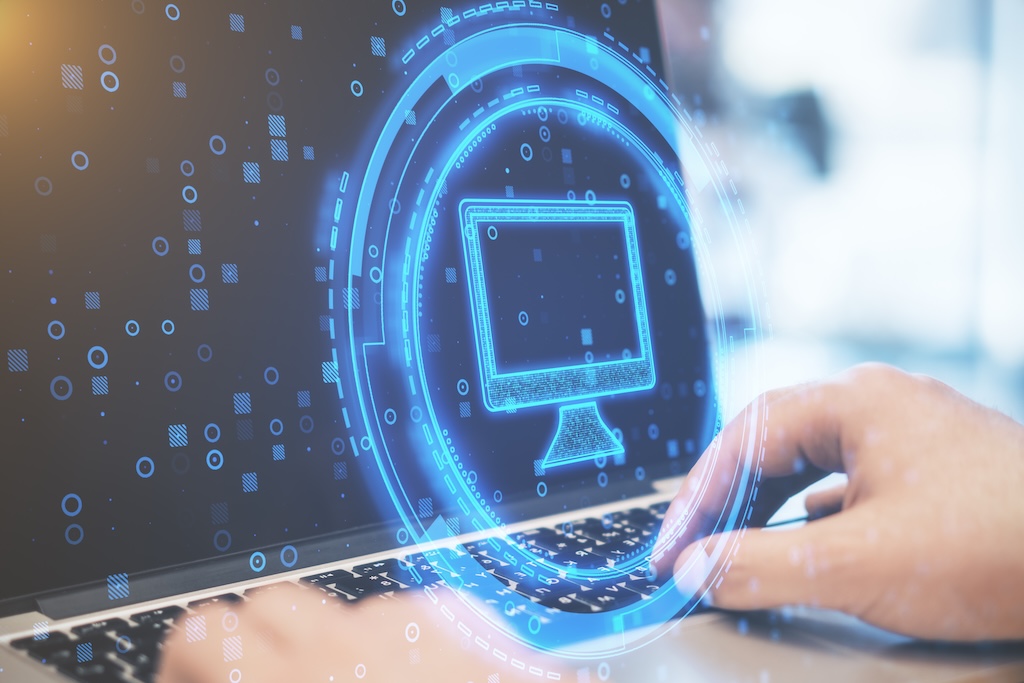Global Regulatory Change Isn’t Waiting...Are Your Compliance Risk Solutions Ready?
According to Thomson Reuters Regulatory Intelligence, in 2021, there were over 64,000 regulatory alerts across 190 countries, highlighting the speed...
6 min read
Heroic Technologies : Jun 17, 2025 1:00:00 PM

IT infrastructure for schools plays a critical role in fostering effective learning environments.
A solid IT infrastructure enables schools and universities to adapt to rapidly changing educational technology demands. From improving communication among staff and students to providing access to countless resources, robust infrastructure supports innovative teaching methods.
As challenges like budget constraints and outdated technologies persist, prioritizing IT infrastructure becomes vital for achieving success for all educational institutions.
Educational institutions face the ongoing challenge of assessing current infrastructure to identify gaps and inefficiencies. A thorough review of existing systems helps gain a grasp of the IT needs for the school. This assessment involves several key aspects:
Many schools operate on legacy systems that hinder performance and complicate operations. Recognizing these technologies is the first step toward modernization.
Schools must evaluate their infrastructure’s capabilities against current educational demands. Common shortcomings include insufficient bandwidth, slow processing speeds, and lack of integration among educational tools.
Financial limitations often prevent schools from upgrading their technology. Knowing budget constraints allows for tailored solutions that maximize available resources while still meeting educational requirements.
Customizing solutions to fulfill unique educational requirements is crucial. Tailored approaches can enhance both teaching and learning experiences. Considerations may include:
Educational institutions face a wide range of cybersecurity threats that can compromise sensitive data and disrupt learning. It’s essential to know these risks and implement effective strategies.
Outdated technology poses significant risks to educational institutions. Legacy systems often lack support for modern applications, creating vulnerabilities that can compromise security and hinder operational efficiency. The dangers associated with these systems include:
Upgrading infrastructure provides various advantages, such as enhanced performance, improved security measures, and cost savings in the long run. To efficiently modernize outdated systems, consider the following steps:
Future-proof IT infrastructure is vital for educational institutions. Implementing the following methods can guarantee the durability of IT investments:
Regularly evaluate existing systems and anticipate future requirements.
Adopt technologies that can grow alongside your institution. Scalable solutions allow for increased capacity and functionality without the need for complete overhauls. This flexibility supports initiatives like personalized learning experiences and data-driven decision-making.
Embrace hybrid cloud computing in education to optimize resources effectively. This strategy combines on-premises systems with cloud solutions, allowing institutions to:
Reduce costs by utilizing cloud services for variable workloads.
Enhance performance through efficient resource allocation.
Improve security by maintaining sensitive data on-premises while leveraging the cloud for less critical applications.
Cloud computing in education is changing how schools manage resources, deliver content, and interact with students. Here are some of the advantages that cloud technologies offer to educational institutions:
Hybrid cloud solutions provide a practical approach to managing both on-premises and cloud workloads. This model allows educational institutions to:
Data transfer challenges often arise during the adoption of cloud solutions. To address these issues:
A robust network security for universities is critical for today’s educational institutions. A comprehensive defense strategy protects sensitive data while maintaining trust among students, staff, and parents. Key components of this strategy include:
Every user and device must be authenticated and authorized, regardless of their location within the network. This approach minimizes the risk of unauthorized access and provides a more controlled environment for sensitive information.
Conducting frequent evaluations of network security measures is integral . These assessments help identify vulnerabilities and areas needing improvement, so your defenses evolve alongside emerging threats.
Best practices for school cybersecurity involve:
Layered Defense Strategies:
User Education:
Advanced Security Tools:
Educational institutions must prioritize the protection of sensitive information. Deploying advanced security tools is vital in creating a strong defense system against data breaches. Here are some key strategies:
This technique transforms sensitive data into unreadable formats, accessible only to authorized users with decryption keys. Implementing encryption across all data storage and transmission channels protects student records, financial information, and other critical data.
Establishing strict access control measures guarantees that only authorized personnel can view or modify sensitive information. Role-based access controls limit user permissions according to their responsibilities within the institution. This reduces the risk of unauthorized access and potential data leaks.
Meeting compliance standards related to student data protection is a must for all educational organizations. Regulations such as FERPA mandate strict guidelines for handling student information.
Incorporating tools like intrusion detection systems, firewalls, and multi-factor authentication enhances the overall security posture.
Technology plays a fundamental role in shaping personalized learning experiences for students. By integrating digital learning tools and interactive learning tools, educators can tailor instruction to meet diverse student needs. This approach encourages engagement and fosters a more dynamic learning environment.
The application of AI analytics enhances educational outcomes. With AI, educators can:
Incorporating digital tools into the classroom promotes collaboration among students. Tools such as collaborative platforms enable:
To maximize the benefits of technology, continuous training for educators is essential. Understanding both tech adoption and cybersecurity awareness helps faculty members stay equipped to handle emerging challenges. This includes:
Schools and universities must prioritize ongoing evaluation and adaptation to address educational needs. This approach keeps institutions agile and responsive to technological advancements.
Strategies include:
Proactive management fosters a future-ready educational environment. Taking these steps today will enhance the learning experiences of staff and students, while guaranteeing that institutions are prepared for tomorrow’s challenges.
A robust IT infrastructure it supports effective teaching and learning. It enables schools to integrate technology into the curriculum, enhances communication and data security, ultimately improving educational outcomes.
K-12 institutions often encounter challenges such as outdated technology and budget constraints, which can hinder technological advancements. These limitations affect their ability to implement modern solutions that enhance learning experiences.
Schools can mitigate cybersecurity threats by adopting comprehensive security strategies, including implementing advanced security tools, conducting regular risk assessments, and fostering a culture of cybersecurity awareness among staff and students.
Upgrading legacy systems improves performance and security by reducing vulnerabilities associated with outdated technology. Modernizing infrastructure allows schools to leverage new features, enhance user experience, and better support educational needs.
To future-proof IT investments, schools should integrate scalable technology solutions and consider hybrid cloud strategies. This approach helps IT infrastructure adapt to changing demands while optimizing resource usage.
Professional development is crucial for educators to effectively adopt digital tools and understand cybersecurity practices. Continuous training ensures that teachers are equipped with the necessary skills to utilize technology for personalized learning experiences.

According to Thomson Reuters Regulatory Intelligence, in 2021, there were over 64,000 regulatory alerts across 190 countries, highlighting the speed...

Picture this: your client sends you their tax returns, medical records, and confidential business documents via email. They hit send, the files...
Picture this: It's 11 PM, and you're frantically searching for a critical deposition transcript that was "definitely saved somewhere." Your paralegal...

In 2025, small businesses will face a variety of IT challenges. Every business needs to keep up with fast-changing technology and deal with more...

The legal industry operates where data integrity, confidentiality, and compliance are paramount. Portland managed IT has emerged as a crucial asset...

Managed IT is crucial for law firms trying to deal with the complexities of managing technology. These services include a variety of solutions aimed...